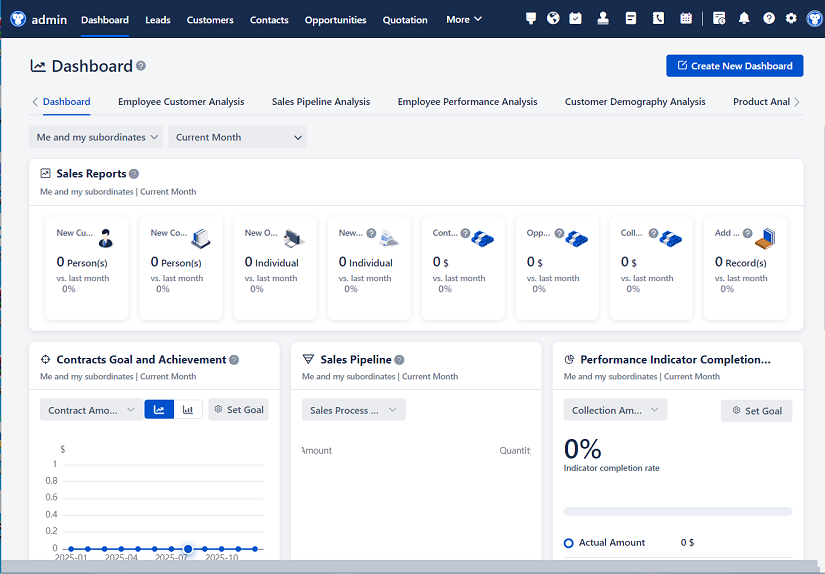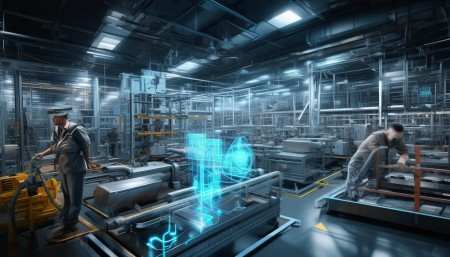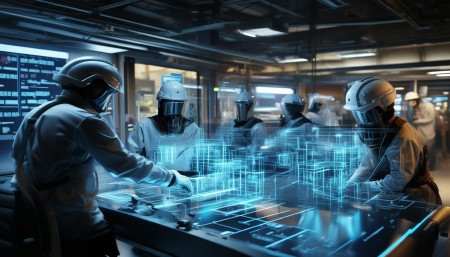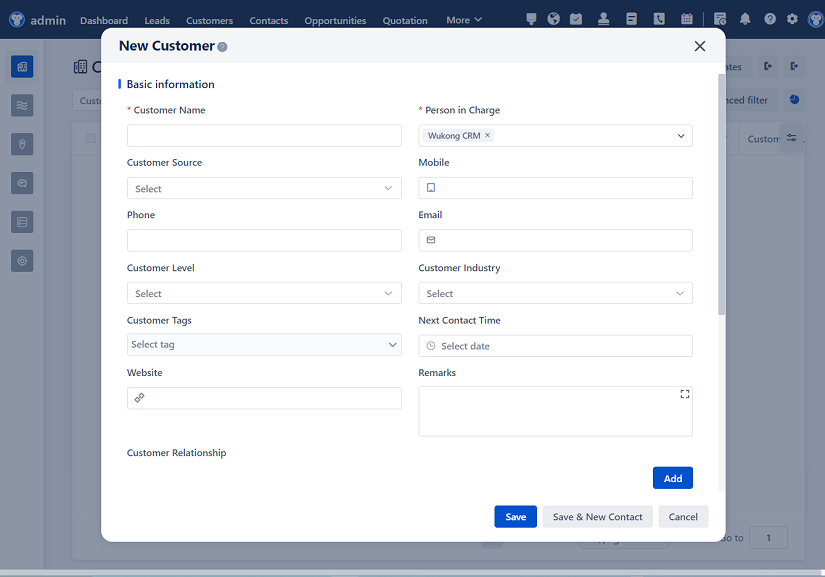
△Click on the top right corner to try Wukong CRM for free
Hey there! So, you've probably heard the term "HSE Management System" thrown around, but what exactly does it mean? Well, let me break it down for you in a way that's easy to understand. Imagine you're running a business, and you want to make sure everyone is safe, the environment is protected, and everything runs smoothly. That's where an HSE (Health, Safety, and Environment) Management System comes in.
Think of it like a big, organized plan that helps companies keep their employees healthy, prevent accidents, and take care of the environment. It's not just about following rules; it's about creating a culture where safety and sustainability are at the heart of everything you do.
Now, let's dive a bit deeper. An HSE Management System is a structured approach to managing health, safety, and environmental risks. It's kind of like having a playbook for your company, with clear guidelines and procedures to follow. This system helps you identify potential hazards, assess risks, and put in place measures to control or eliminate them.
But why is this so important? Well, for starters, it's about protecting people. No one wants to see their colleagues get hurt on the job. By having a robust HSE system, you can significantly reduce the chances of accidents and injuries. And it's not just about physical safety; it also covers mental health and well-being. We all know how stressful work can be, and a good HSE system will have programs to support mental health too.
Another big reason is the environment. We only have one planet, and we need to take care of it. An HSE system helps you manage your environmental impact, from reducing waste to conserving energy. It's about being responsible and sustainable, which is not only good for the planet but also for your business. Customers and stakeholders are increasingly looking for companies that are environmentally conscious, and having a strong HSE system can give you a competitive edge.
So, how does it work in practice? Let's say you run a manufacturing plant. You'd start by identifying all the potential hazards in your workplace. This could be anything from machinery that might cause injuries to chemicals that could be harmful if mishandled. Once you've identified these hazards, you'd assess the risks associated with them. For example, how likely is it that someone could get injured, and how severe would the injury be?

Next, you'd put in place controls to manage those risks. This might involve training your staff on how to use equipment safely, providing personal protective equipment (PPE), or even redesigning processes to eliminate the hazard altogether. The key is to be proactive, not reactive. You don't want to wait for an accident to happen before you take action.

And it's not a one-time thing. An HSE system is all about continuous improvement. You need to regularly review and update your procedures to make sure they're still effective. This means conducting regular audits, inspections, and reviews. It's like keeping your car in good condition; you need to do regular maintenance to keep it running smoothly.
One of the most important parts of an HSE system is communication. You need to make sure everyone in the organization understands the importance of health, safety, and the environment. This means providing training, holding regular meetings, and making sure that everyone knows what their responsibilities are. When everyone is on the same page, it's much easier to create a culture of safety and sustainability.
Another key aspect is leadership. The top management needs to be fully committed to the HSE system. They set the tone for the entire organization. If the leaders show that they care about health, safety, and the environment, then the rest of the team is more likely to follow suit. It's about leading by example and making it clear that these things are a priority.

Now, I know what you might be thinking: "This all sounds great, but isn't it expensive?" Well, yes, implementing an HSE system does require some investment. But think about the long-term benefits. Reducing accidents and injuries can save you a lot of money in the long run. Medical bills, lost productivity, and potential legal costs can add up quickly. Plus, a good HSE system can help you avoid fines and penalties for non-compliance with regulations.
And let's not forget the intangible benefits. A safe and healthy workplace is a happier workplace. When employees feel valued and protected, they're more likely to be engaged and productive. It's a win-win situation.
So, how do you get started? The first step is to conduct a thorough assessment of your current situation. What are the main risks in your workplace? Are there any areas where you could improve? Once you have a clear picture, you can start developing your HSE system. This might involve setting up a dedicated HSE team, creating policies and procedures, and putting in place the necessary controls.
It's also a good idea to look at best practices and standards. There are several internationally recognized HSE management systems, such as ISO 45001 for occupational health and safety and ISO 14001 for environmental management. These standards provide a framework that you can use to develop your own system. They're like a roadmap, guiding you through the process and helping you ensure that you cover all the bases.
But remember, every organization is different. What works for one company might not work for another. So, it's important to tailor your HSE system to your specific needs. This might mean adapting existing standards or coming up with your own unique approach. The key is to be flexible and open to change.
And don't forget to involve your employees in the process. They're the ones who are out there on the front lines, and they often have the best insights into what's really going on. By involving them in the development and implementation of the HSE system, you can get their buy-in and make sure that the system is practical and effective.
Finally, it's important to measure and monitor your progress. Set clear goals and objectives, and track your performance over time. This will help you see where you're doing well and where you need to improve. And don't be afraid to make changes along the way. An HSE system is a living, breathing thing, and it should evolve as your organization grows and changes.
So, there you have it—a quick rundown of what an HSE Management System is and why it's so important. It's all about creating a safe, healthy, and sustainable workplace, and it's something that every organization should take seriously.
Q&A:
-
What is the main purpose of an HSE Management System?
- The main purpose is to protect the health and safety of employees, prevent accidents, and minimize the environmental impact of the organization. It's about creating a culture where safety and sustainability are top priorities.
-
How does an HSE Management System benefit a company?
- An HSE system can reduce the risk of accidents and injuries, which can save the company money in the long run. It also helps the company comply with regulations, avoid fines, and build a positive reputation. Plus, a safe and healthy workplace leads to happier and more productive employees.
-
Is an HSE Management System only for large companies?
- No, an HSE system is beneficial for organizations of all sizes. While larger companies might have more resources to implement a comprehensive system, smaller companies can also benefit from a tailored HSE approach. The key is to adapt the system to fit the specific needs and resources of the organization.
-
How can I get my employees to buy into the HSE system?
- Involving employees in the development and implementation of the HSE system is crucial. Provide training, communicate the importance of HSE, and lead by example. When employees see that the leadership is committed to safety and sustainability, they are more likely to follow suit.
-
What are some common challenges in implementing an HSE Management System?
- Some common challenges include resistance to change, lack of resources, and difficulty in maintaining consistent compliance. Overcoming these challenges requires strong leadership, clear communication, and a commitment to continuous improvement. Regular training and audits can also help ensure that the system remains effective over time.
I hope this helps! If you have any more questions, feel free to ask.
Related links:
Free trial of CRM
Understand CRM system
AI CRM Systems

△Click on the top right corner to try Wukong CRM for free